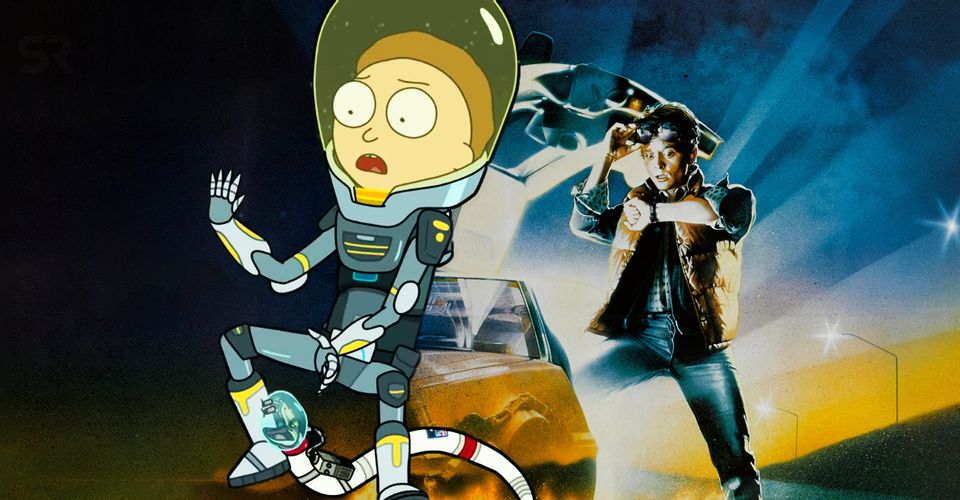Rick & Morty Broke Its No Time Travel Rule: Here’s Why

In season 4’s “Rattlestar Ricklactica,” Rick and Morty broke its long-standing “No Time Travel” rule – but the story was compelling enough to make it worth it. Since the show started as a pretty obvious Back to the Future riff (which it’s long since evolved past), doing time travel stories might have been a bit too close to just ripping off Back to the Future.
Moreover, as Rick and Morty co-creator Dan Harmon explained at San Diego Comic-Con in 2015, “Time travel is a real shark-jumper. Once you introduce it to the canon of your show – it’s just a dangerous toy to pull out.” They went as far as to leave a box of “Time travel stuff” on a shelf in Rick’s laboratory, literally shelving the idea of time travel in the show. There were times they came close, with Rick being sent to time prison, traveling to a future dimension in the first episode, and stopping time between the first and second seasons. Still, as Harmon pointed out, even pausing time had terrible repercussions: “It fractures time so they’re in a space where they have become theoretical instead of real.”
Though “Rattlestar Ricklactica” breaks the no time travel rule, it does so in order to prove exactly why time travel is a bad idea. As Rick and Morty co-creator and animator Justin Roiland said when describing season 2’s time-related episode, “it’s a cautionary tale of why you don’t f**k with time.” “Rattlestar Ricklactica” uses time travel as a major plot mechanic, after Morty accidentally creates a planet of fascist snakes trying to take over the universe. Rick and Morty keep going back in time to stop it from happening, with every attempt to stop the snakes leading to a more difficult and absurd situation.

Rather than trying to avoid any comparisons to other time travel stories, “Rattlestar Rickactica” is packed with references. The episode brings back the Dimensional Time Cops from season 2 as a Timecop reference. It also pays extra homage to Back to the Future by building a large part of the story around going back in time to 1985 and taking a book with crucial information back with them. By mashing different time travel stories together, Rick and Morty avoids the trap of feeling like it has ripped off any particular story.
The episode also never gets too into the mechanics of time travel. This episode most resembles the Terminator franchise’s time travel, and not just because it bring time traveling robots into the story. The time travel in this episode uses Terminator’s more contradictory approach to time travel, where almost anything goes. This loose approach lets the writers focus more on the story itself. Morty has good intentions, trying to save and later replace the snake astronaut. What he doesn’t do is think through the consequences of his actions, causing problems to grow out of control. This has a theme for Morty throughout the show, but especially emphasized in season 4, with the premiere revolving around his misuse of death crystals.
By combining as many time travel tropes as possible without ever putting the mechanics of time travel at the forefront, Rick and Morty found a time travel story that felt original and didn’t get too close to its origins as a Back to the Future parody. Coming from a deeper theme throughout the show and the most recent season, it helped feel less like a gimmick and more like a straightforward evolution of the premise of the show. And though it may break the no time travel rule, it also reminds fans why the rule exists in the first place.

















